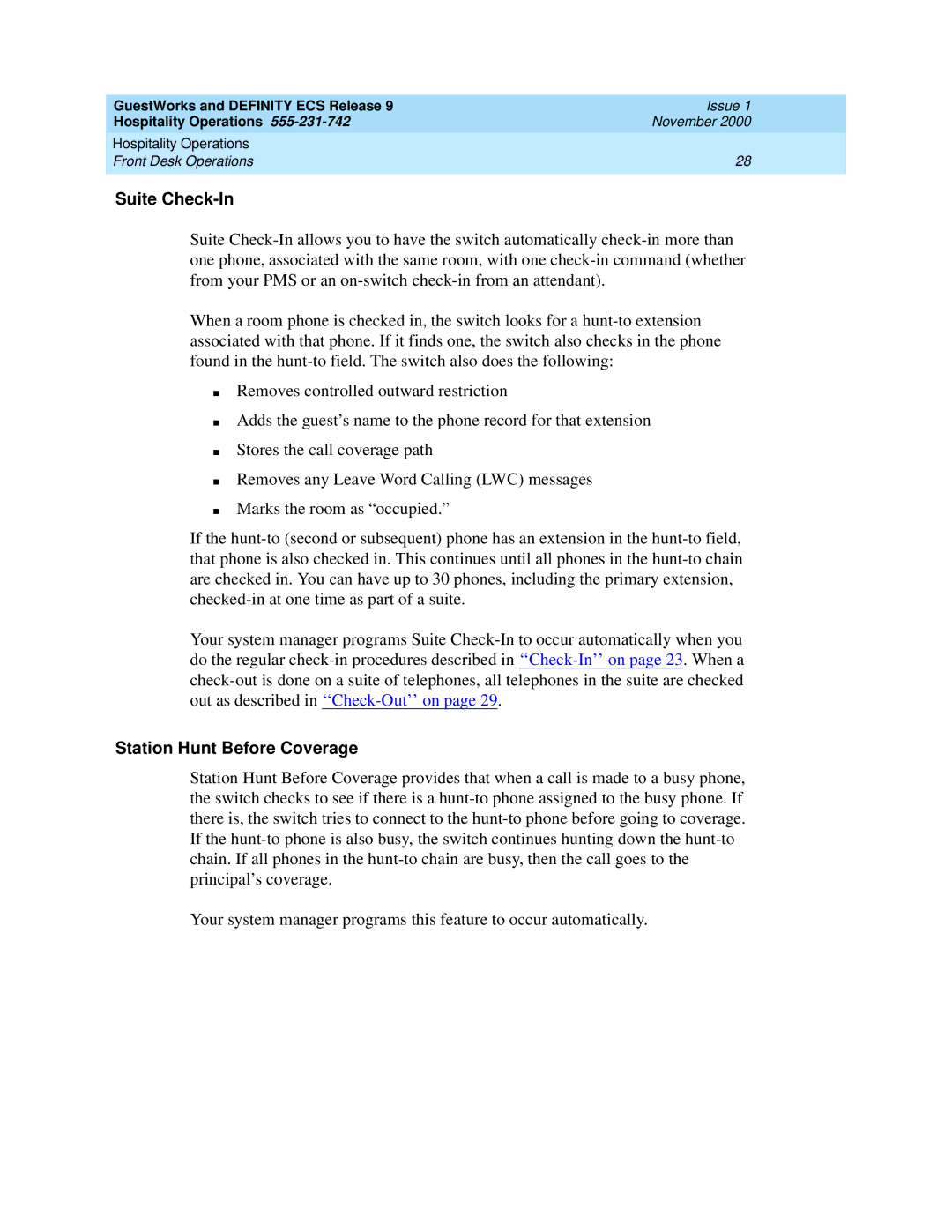GuestWorks and DEFINITY ECS Release 9 | Issue 1 |
Hospitality Operations 555-231-742 | November 2000 |
Hospitality Operations | |
Front Desk Operations | 28 |
| |
Suite Check-In
Suite Check-In allows you to have the switch automatically check-in more than one phone, associated with the same room, with one check-in command (whether from your PMS or an on-switch check-in from an attendant).
When a room phone is checked in, the switch looks for a hunt-to extension associated with that phone. If it finds one, the switch also checks in the phone found in the hunt-to field. The switch also does the following:
Removes controlled outward restriction
Adds the guest’s name to the phone record for that extension
Stores the call coverage path
Removes any Leave Word Calling (LWC) messages
Marks the room as “occupied.”
If the hunt-to (second or subsequent) phone has an extension in the hunt-to field, that phone is also checked in. This continues until all phones in the hunt-to chain are checked in. You can have up to 30 phones, including the primary extension, checked-in at one time as part of a suite.
Your system manager programs Suite Check-In to occur automatically when you do the regular check-in procedures described in ‘‘Check-In’’ on page 23 . When a check-out is done on a suite of telephones, all telephones in the suite are checked out as described in ‘‘Check-Out’’ on page 29 .
Station Hunt Before Coverage
Station Hunt Before Coverage provides that when a call is made to a busy phone, the switch checks to see if there is a hunt-to phone assigned to the busy phone. If there is, the switch tries to connect to the hunt-to phone before going to coverage. If the hunt-to phone is also busy, the switch continues hunting down the hunt-to chain. If all phones in the hunt-to chain are busy, then the call goes to the principal’s coverage.
Your system manager programs this feature to occur automatically.
